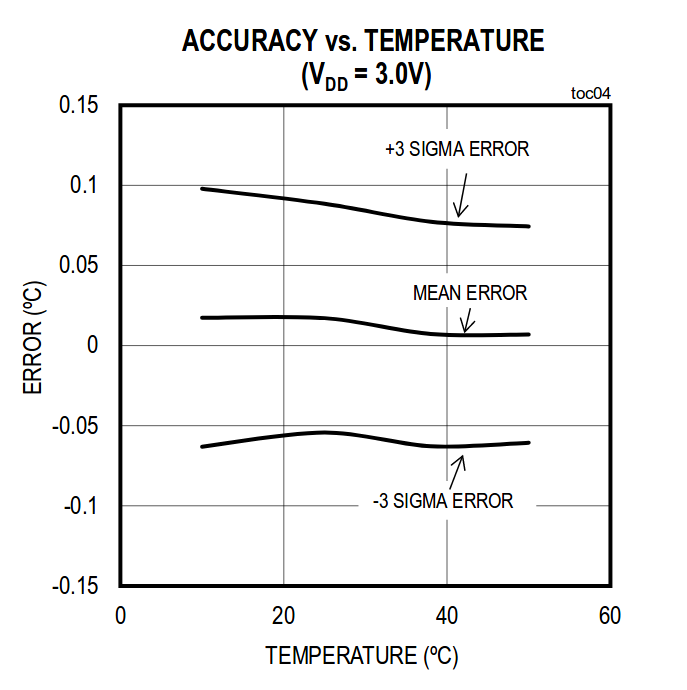This project will use a digital temperature sensor to avoid analog circuitry and keep cost per unit and size as small as possible. I tend to use Mouser to source parts because they're one of a few that ship to Greece with no hassle.
I'm looking at "board mount temperature sensors" and the first category I'm going to filter on is "accuracy". I selected all accuracies up to +/-0.125C. The next choice after that is 0.2C, which is too large for this project's goals.
Only 6 temperature sensors are left. The cheapest one is Maxim's MAX30205MTA+ at €1.53 for one. The next one is Silicon Labs' SI7051-A20-IM at €2.02 for one. The rest are either too expensive or not accurate enough, so I'll just compare these two.
For a quantity of 50, MAX30205 is €1.41 and SI7051 is €1.79 so the cost difference (€0.38) would be €19 for a batch of 50. Not negligible but I'll have to have a closer look at how both fit the requirements.
Both are rather small 3x3mm sensors that are controlled via I2C. Their stated 0.1°C is only valid between 37°C and 39°C for MAX30205 and 35.8°C to 41 °C for SI7051. I'm interested in accuracy between 26°C and 34°C, the temperature range in which sea turtle eggs incubate. Over this range, stated accuracies are ±0.3°C (+15°C to +35.8°C) for MAX30205 and ±0.13°C (20.0°C to 70.0°C) for SI7051. TheSI7051 seems to retain high accuracy over a wider range, including my range of interest (26°C to 34°C).
Page 5 of the MAX30205 datasheet includes a plot of accuracy vs temperature on various voltages. This is very useful information, as it shows that for supply voltage of 3.0V accuracy remains better than ±0.1°C between 20°C and 50°C. This detailed information is not available for the SI7051, which is a drawback if any research results end up in a scientific publication.

The MAX30205 operates between 0°C and 50°C, while the SI7051 operates from -40°C and +125°C. While both are wider than my range of interest, it would be nice to have some extra range, perhaps up to 70°C, so I can measure sand temperature near the sizzling beach surface during hot summer days. However this is not a core requirement.
Based on the project's requirements, MAX30205 features the lowest cost and fits the accuracy and reliability needed, so this is the temperature sensor I'm choosing for this project. The SI7051 can remain an alternative if an extended temperature range is required.
 Nikos
Nikos
Discussions
Become a Hackaday.io Member
Create an account to leave a comment. Already have an account? Log In.